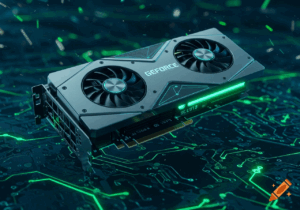Hey everyone, if you’re into PC gaming or just love keeping up with tech hardware, you’ve probably heard the whispers about AMD’s latest graphics card, the Radeon RX 9070 XT. As we hit October 2025, this thing is blowing up in search trends – I mean, searches for it have skyrocketed over 999% in recent months, according to data from Ahrefs. It’s like everyone and their dog is curious about what AMD has up its sleeve. I’ve been following AMD’s moves for years, ever since I built my first gaming rig back in college, and this card feels like a big step forward. Let me break it down for you in a way that’s easy to digest, without all the jargon overload.
First off, why the hype? The RX 9070 XT is part of AMD’s RDNA 4 architecture, which promises better performance per watt than its predecessors. Think of it as AMD’s answer to Nvidia’s dominance in the high-end GPU market. From what leaks and rumors suggest – and trust me, I’ve scoured forums like Reddit’s r/Amd and tech sites – this card could handle 4K gaming at ultra settings without breaking a sweat. Imagine playing the latest titles like Cyberpunk 2077 with ray tracing on full blast, and your system doesn’t sound like a jet engine. That’s the dream, right? Early benchmarks floating around (though unofficial) show it outperforming the RX 7900 XT in some tests, especially in rasterization-heavy games.
But let’s talk specs, because that’s what gets us tech nerds excited. The RX 9070 XT is rumored to pack around 12,000 stream processors, up from the 7900 series, with a boost clock pushing 2.8GHz or higher. Memory-wise, it’s looking at 20GB of GDDR6X on a 320-bit bus, which means faster data handling for complex scenes in games or even creative work like video editing. I remember upgrading to a 6000-series card a couple years back, and the jump in VRAM made a huge difference for my 4K monitor setup. If these specs hold, creators using software like Adobe Premiere or Blender could see massive gains too.
Price is always the elephant in the room with new GPUs. Word on the street is it’ll launch around $800-$900, positioning it as a mid-to-high-end option. That’s competitive with Nvidia’s RTX 4070 Ti Super, but AMD usually undercuts on price while delivering solid value. Remember how the RX 6800 XT shook things up back in 2020? This could be similar, especially with AMD’s focus on FSR (FidelityFX Super Resolution) 3.0, their upscaling tech that’s getting smarter with AI integration. It’s not just about raw power; it’s about making games run smoother on a budget.
Of course, no tech release is without its drama. Supply chain issues have plagued launches before, and with global chip shortages still lingering from post-pandemic effects, we might see scalpers snapping these up. Plus, power consumption – rumors peg it at 350W TDP, which means you’ll need a beefy PSU. I learned that the hard way once when my old 650W supply couldn’t handle a new card. On the bright side, AMD’s efficiency improvements could mean lower electricity bills and cooler temps.
Looking broader, this card ties into bigger 2025 trends like AI in gaming. AMD is baking in more AI accelerators, which could enhance features like frame generation or even in-game NPC behaviors. I’ve played around with AI mods in games, and it’s wild how they make worlds feel alive. For esports pros or casual gamers, this means higher frame rates in competitive titles like Valorant or Fortnite.
If you’re thinking of upgrading, here’s my advice: Wait for official reviews from sites like TechSpot or Linus Tech Tips. They usually drop embargoes right after launch, expected Q4 2025. In the meantime, check your current setup – is your CPU bottlenecking? Ryzen 9000 series pairs perfectly with this. And don’t forget about ray tracing; AMD’s catching up, but Nvidia still leads there.
All in all, the RX 9070 XT could be a game-changer for AMD fans tired of green team prices. It’s exciting times for tech, folks. What do you think – are you team AMD or Nvidia? Drop your thoughts in the comments; I’d love to chat about builds!
